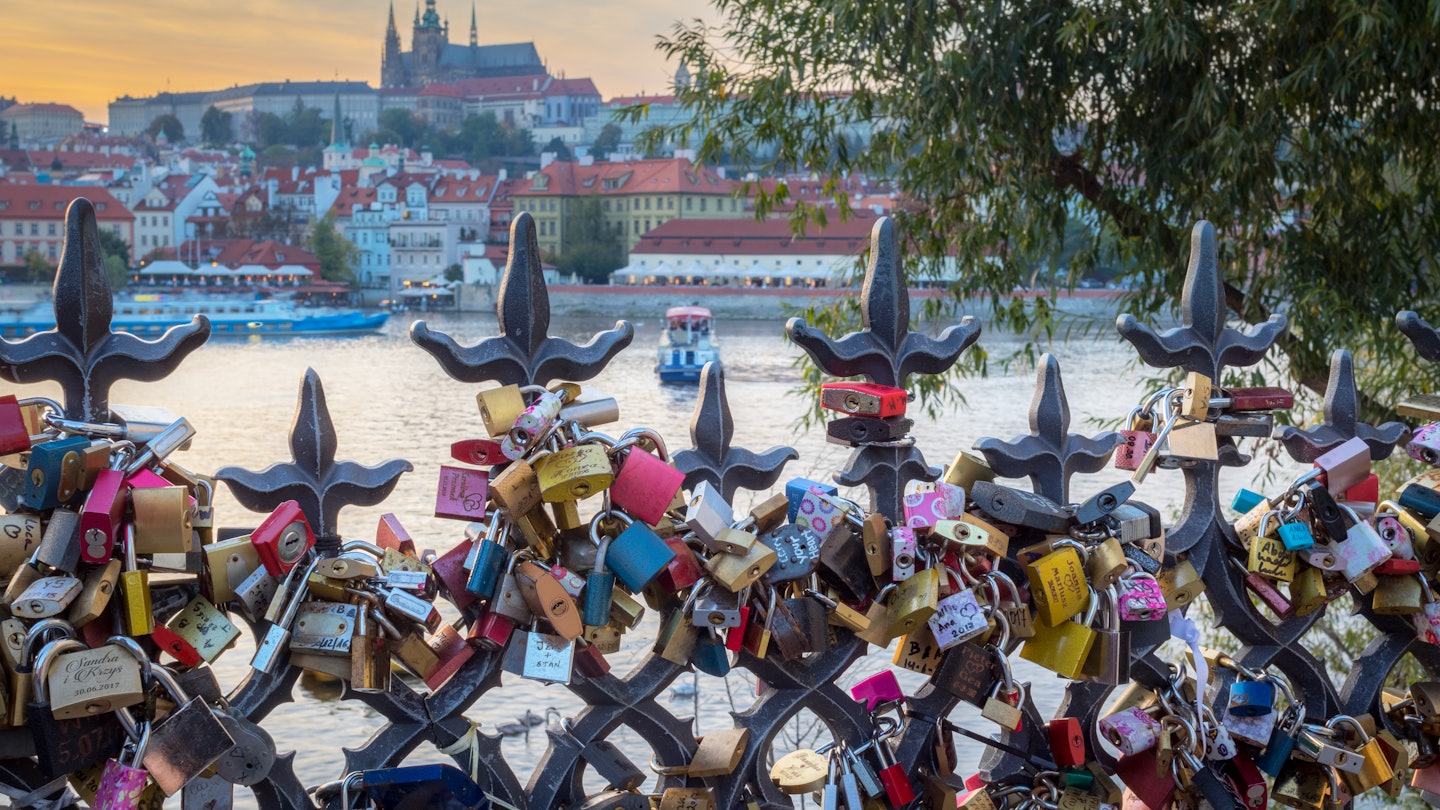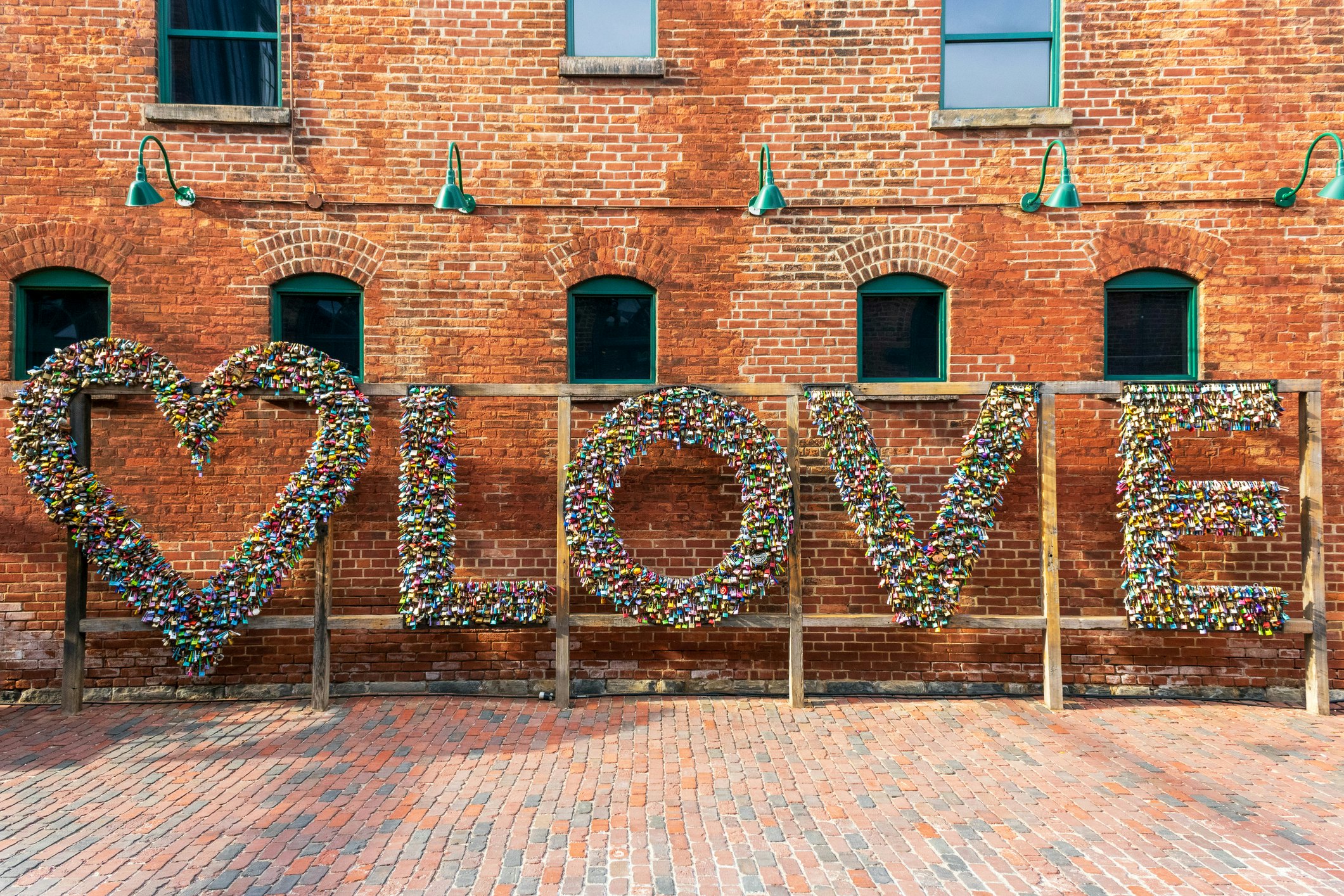
While one padlock won't cause widespread damage, their proliferation can be insidious, pictured here in Prague city © Getty
Etch the names of you and your partner onto a padlock, secure it to a scenic landmark, throw away the key with dramatic flair and voilà — you've got the ultimate symbol of everlasting love.
Known as love locks, romantics would fasten them to bridges, lamp posts, fences and monuments worldwide. Dr. Ceri Houlbrook, Lecturer in Folklore and History at the University of Hertfordshire, currently has a database listing over 500 love-lock sites spread across 65 countries on every continent except Antarctica.
"There's something universal about the symbolism of love locks," says Houlbrook, who authored a history book about the romantically-endowed objects. "Padlocks are designed to be durable and steadfast, to hold two things together securely, to keep something safe. This is easily translated into a ritual about love, commitment and memory."

But now destinations from Paris to the Grand Canyon want to break up with the tradition.
"Love is strong," Grand Canyon National Park recently wrote on Facebook, "but it is not as strong as our bolt cutters."
"The locks are a form of both vandalism and litter," says Jeff Stebbins, a Public Affairs Specialist for Grand Canyon National Park. The park joins an army of international voices opposing the padlock plague. So how could a tiny love symbol inspire such ire? Let's unlock the mystery so you can decide if — and where – it's appropriate to padlock your devotion.

A brief history of love locks
According to folklore, love locks either originated in ancient China or 20th-century Serbia, after WWI tore a pair of lovers apart.
"Both of these legends are likely recent inventions, adapting older stories to explain where the love-lock custom comes from – and to draw tourists," says Houlbrook.
As for hard evidence, her research traces the padlock trend to Pécs, Hungary – but it has nothing to do with romance. In the 1970s, Sex Pistols bassist Sid Vicious (accused of murdering his girlfriend in 1978) wore a padlock around his neck, which the punk community adopted as a symbol of resistance against convention. Padlocks placed on a public fence in the 1980s likely sprouted from this subculture – a sign of dissent from Soviet rule.
As for the jump from punk to passion, that's attributed to Federico Moccia's 2006 Italian teen romance novel Ho Voglia di Te (I Want You), in which characters attach a padlock to a lamp post near Rome's Milvio Bridge. They then throw the key into the Tevere River as a sign of eternal commitment.
Houlbrook says fans of the book and its subsequent film (2007) began imitating Moccia's love scene. Then, tourists began imitating the fans.
Within a few years, love locks materialized like barnacles on bridges around Europe, forming a new type of tourist site, created primarily by tourists and popularized globally on social media.

The problems with padlocks
While one padlock doesn't cause widespread damage, a proliferation of them can be insidious.
In Paris, the City of Love, people started to place love locks on the Pont des Arts, a pedestrian bridge crossing the Seine. That was in 2008 and street vendors saw it as a business opportunity. They would set up stands on either side of the bridge to hawk cheap locks to amorous visitors. Within the next seven years, the bridge accumulated roughly 700,000 individual locks weighing 93 metric tons.
Sections of the bridge collapsed in 2014 under the weight of 'commitment.' The following year, authorities removed the locks and installed some padlock-proof plexiglass.
Cities around the world have faced similar issues surrounding bridge safety. In 2015, Melbourne removed 20,000 love locks from the Evan Walker Bridge after their weight caused the bridge's wires to sag. In 2016, Leeds cut locks from the Centenary Bridge, citing potential corrosion of metalwork and other structural issues.
After the Brooklyn Bridge removed roughly 11,000 locks in 2015, NYC started issuing $100 fines to padlocking vandals. According to city officials, the locks endanger car traffic and create excessive maintenance costs; they also erode the bridge's architectural integrity.
"The Brooklyn Bridge is one of the oldest bridges of its kind, an iconic symbol of our city and a wonderful, walkable landmark," said former Manhattan Borough President Gale A. Brewer in a 2016 press statement. "It's crucial that we take prudent steps to keep the Brooklyn Bridge safe, sound and in good repair, so future generations can enjoy the bridge and its views."
As for the Grand Canyon, the concern isn't only padlocks – it's also keys, tossed into the wild.
These keys can harm animals, including the endangered condor – a curious bird attracted to shiny things. Jeff Stebbins says wildlife "can and do ingest" items like coins and keys, but because animals aren't meant to eat metal, the objects can get lodged in their digestive tracts and kill them.
Park officials recently shared an X-ray of a condor's coin-clogged digestive tract on Facebook. The condor underwent an operation to remove the loose change.
Stebbins also argues that love locks encourage other forms of graffiti, vandalism and litter.
"People come to national parks and other undeveloped places to appreciate the beauty of the natural world," he says. A padlock pile ruins that experience.
It can also ruin the padlocker's. Stebbins notes that this type of vandalism is a Class C misdemeanor. Consequences include anything from a $250 citation to one year in prison "for more egregious offenses."

Solutions and substitutes for love locks
Despite the dangers, the padlock trend continues – compelling many locations to create designated spaces that can encourage the custom safely.
In Gretna Green, Scotland's world-famous eloping destination, a 120-square-foot sculpture courts couples to leave locks. Similar sculptures invite locks in Toronto's Distillery District and Estonia's Keila-Joa.
For litter-conscious crowds, Namsan Mountain in Seoul provides 'love boxes' where couples drop keys after attaching padlocks to love-lock sculptures throughout the site – a suitable alternative to throwing them toward unsuspecting bystanders below.
But if you attach a padlock at unsanctioned locations like the Grand Canyon, it'll likely face bolt cutters and end up in the trash – an ominous metaphor for the future of your relationship.
If you're desperate for an alternative, consider locking lips instead. It won't pollute the planet – and it's totally free.





